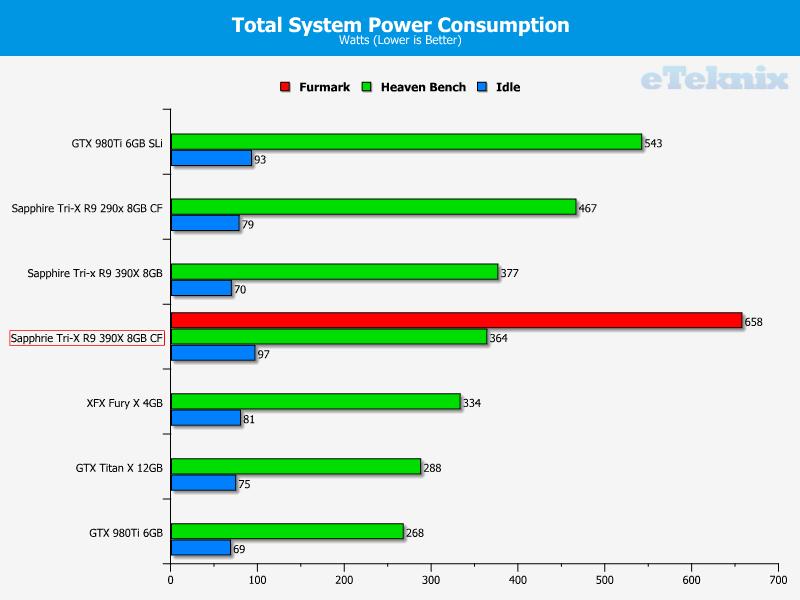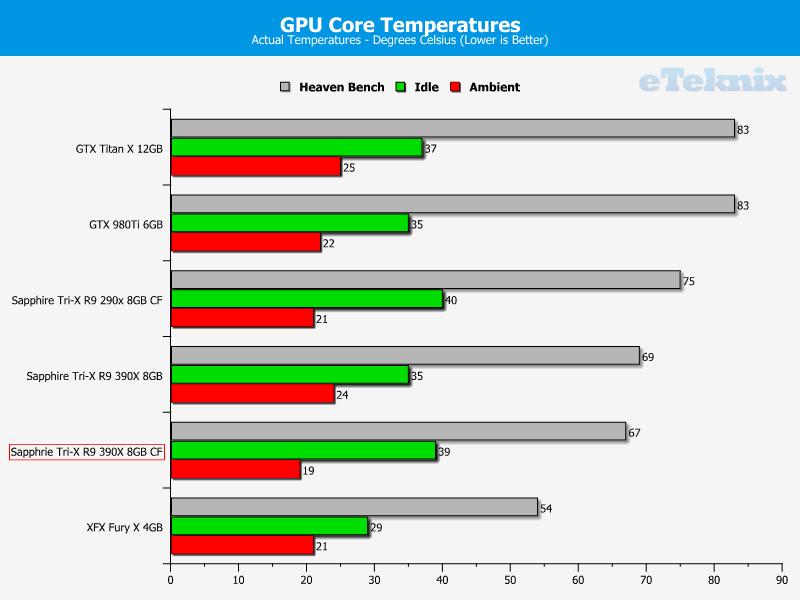Sapphire Tri-X R9 390X 8GB CrossfireX Review
Rikki Wright / 9 years ago
Power & Thermal Performance
Power
With electricity becoming increasingly expensive across most parts of the world the need for computer components to become power efficient has never been more relevant. Graphics cards are often the most power-hungry components inside a desktop system so having an efficient graphics card is very important to keeping power bills under control. Power is often correlated to heat and so lower power consumption means a graphics card is likely to run slightly cooler and put out less heat into your system meaning your other components will run cooler with improved longevity. AMD and Nvidia have both made power consumption an integral part of the way graphics cards dynamically overclock so the need for graphics card vendors to use efficient VRM and PCB designs is becoming important to maximise performance. We take power readings after 5 minutes of three different load scenarios: desktop idle and Unigine Heaven load.
 The R9 390X is a hungry card and draws over 360W alone. Yet when in Crossfire, Heaven benchmark doesn’t fully utilise both GPU’s, so Furmark is used to get an absolute maximum figure.
The R9 390X is a hungry card and draws over 360W alone. Yet when in Crossfire, Heaven benchmark doesn’t fully utilise both GPU’s, so Furmark is used to get an absolute maximum figure.
Temperatures
The cooling solution which graphics card vendors choose to implement is one of the main differences that consumers have to contend with when choosing a graphics cards. Apart from their acoustic properties, the thermal properties of graphics card coolers are extremely important. Lower temperatures are always better and with AMD and Nvidia opting to use dynamic overclocking algorithms that take temperature into account it is important that graphics card vendors use high-performance cooling solutions in order to maximise performance. The era of graphics cards reaching dangerous temperatures are now in the past, but the importance of lower temperatures still remains. Lower temperatures mean better stability, longer component longevity and lower fan speeds .We take temperature readings after 5 minutes of three different load scenarios: desktop idle, Furmark load and Unigine Heaven load. We always record actual temperatures and make a note of the ambient. In the case where more than 1 GPU is used an average is created.

Despite being slightly louder, they remove heat much better than the previous version when in Crossfire.



















